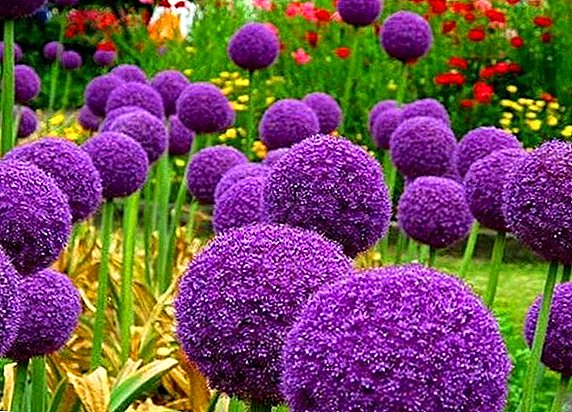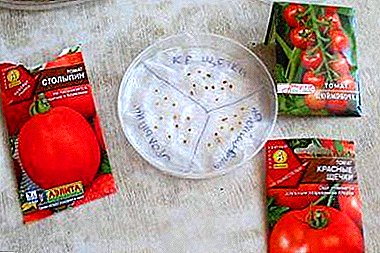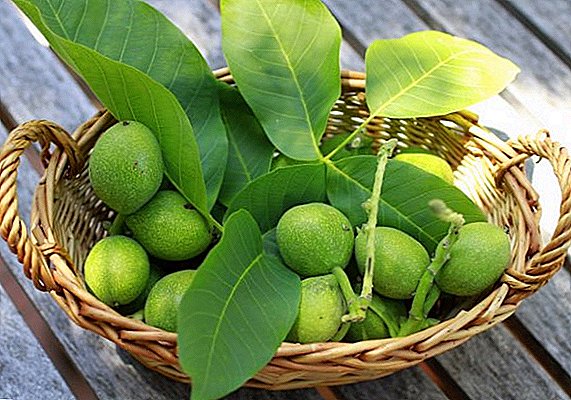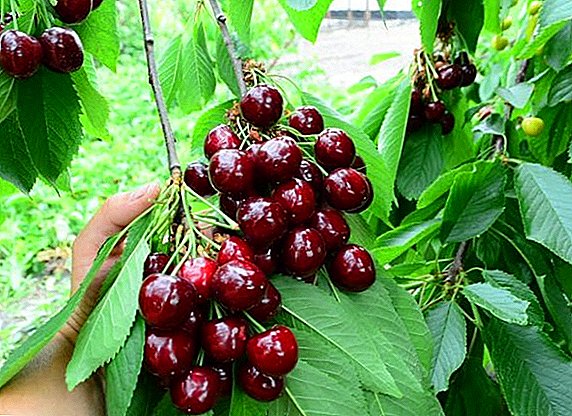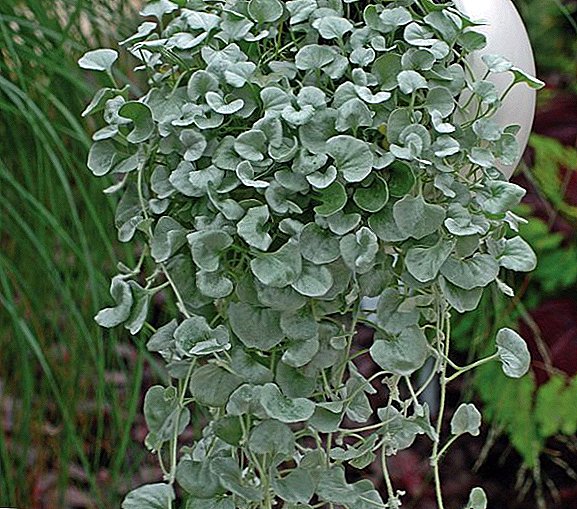 Refined and original plant is used to decorate the apartment, balconies, loggias and garden plots. But most often it is used in ampelous plantings.
Refined and original plant is used to decorate the apartment, balconies, loggias and garden plots. But most often it is used in ampelous plantings.
The advantage of dichondra is that it does not require special care, is unpretentious, and therefore even a novice grower can grow it.
Description of "waterfall plants"
Ampelnaya dichondra refers to the genus of flowering plants that have creeping stems. Her homeland - subtropical and tropical swamps, as well as wet areas near water bodies.
Did you know? Today there are about a dozen varieties of this plant. But the most common are the Silver Falls dichondra and the Emerald Falls dichondra. They differ in leaves of saturated green color.
Long dianthrae creepers are covered with kidney-shaped leaves with slight pubescence. In diameter, they reach 2.5 cm, and the petioles extend up to 3 cm. The dichondra grows no more than 20 cm in height, but the stems reach 1.5 m. At the end nodes they are able to release roots, therefore, the vine is used not only as hanging, but and groundcover.
In the shade it grows much thicker than in the sun. Leaf color depends on the type of plant. So, silver has light, almost gray leaves, while emerald is of deep green color. In the summer of Dichondra produces nondescript flowers up to 3 mm in diameter. Depending on the variety, they may be yellow, purple, white, light green.
Did you know? In the 1950s and 1960s, dichondra was actively used in southern California instead of lawn grass. It is resistant to trampling and can withstand temperatures up to -3 ° C. However, in this form of ampelous dichondra requires a complex fit and care, so it was difficult to maintain its aesthetic appearance. At the same time, dichondra is considered a weed in other states of America and is actively fighting it.
How to grow dichondra
To grow a vine in your garden, you can use one of three ways to grow it: layering, cuttings or seeds.
Cuttings
Amateur gardeners who do not have much experience in growing flowers are recommended to use dichondra cuttings. Caring for it involves periodic pruning to form a bush, and this can be used to collect cuttings. In this case, it is enough to choose a strong stalk and place it in a container with water. The roots should appear in about a week. Now the cuttings can be planted in a container with a special substrate and covered with non-woven material. The temperature in the pot should be kept at about room temperature, and it should be located on the bright sunny side. A month later, dichondra can be planted in a permanent place.
The roots should appear in about a week. Now the cuttings can be planted in a container with a special substrate and covered with non-woven material. The temperature in the pot should be kept at about room temperature, and it should be located on the bright sunny side. A month later, dichondra can be planted in a permanent place.
Layering
Another simple method of reproduction of dichondra is the use of layering. To do this, choose a strong stalk and part of it is added to the ground, pressed on both sides with special clips. At the same time, it is recommended to water the growth site with the stimuli.
Petunia, Ipomoea, Calibrahoa, Sweet Peas, Verbena, Nasturtium, Calendula, Marigolds, Viola, Daisies, Lobelia, Levkoy, Heather, Pelargonium, Dahlias, Asters will feel good on the semi-shaved balconies.
Over time, sprouts will appear in its place, which completely repeat the characteristics of the mother plant. In this case, it is also important to maintain the desired temperature in the place of rooting, so it should also be covered with garden cloth. 
Seeds
Dichondra breeds and seeds, but growing from seed is carried out in advance, not later than mid-February. Only in this case, by summer the seedlings will be ready for planting, since the plant is characterized by a long period of seedling formation.
To do this, prepare containers with a special primer, watered with a stimulator "Zircon" or sodium humate. Seeds are buried to a depth of no more than 5 mm, and then covered with polyethylene or glass. Containers should be stored in a lit place at room temperature.
Approximately in a week the first sprouts should be seen. They will get the expected decorative effect in about 100 days. Planting seedlings in open ground should be at a distance of 35 cm, and when planted in a tank, it can be slightly reduced.
To form a lawn, the soil is loosened, leveled, moistened, then sown uniformly at the rate of about 10 g per square meter. After this, the primer needs to be rolled a little. Then water until the first sprouts appear. The soil should not dry out. It is possible to sow a plant on a lawn from spring to autumn, periodically watering with nitrogen fertilizer.
How to care for ampel dichondra
As already mentioned, the question of how to grow dichondra is completely simple. It is important to remember that this is a moisture-loving plant that prefers acidic soil. When grown in tanks, he needs to ensure good drainage.
An important point in the care of dichondra is watering. Water should be served at the root, regularly and in a timely manner, but not overflowing - when the water stagnates, the plant may die. The earth should not dry up or be overwetted. Dichondra should be watered every day, preferably in the evening, in order to avoid leaf burns when water gets on them. At this time, watering is well done with irrigation, which will help maintain the required level of moisture for the plant.
Once a week dichondra requires feeding. It is recommended to alternate mineral, nitrogen fertilizers with organic. If the plant is planted in pots or a container and when planting a long-acting fertilizer is not made, it should be fertilized twice a month with a soluble combination preparation.
In order for the plant to form a dense crown, it must be constantly cut by about 7-8 cm. If you do it regularly and correctly, it will retain its decorative effect for about 5-7 years. 
Dichondra is resistant to parasites and diseases. The only thing that sometimes is affected by a nematode, which can be fought in traditional ways.
Important! It should be borne in mind that the plant's immunity is weakened if it is planted in places where petunias and other annuals had previously grown.
Application in landscape design
The plant looks great in a variety of planting options: individual, group, as home carpet, decoration of garden structures, buildings. Also it is used to decorate the balcony flower beds. Dichondra looks great in combination with fuchsia, pelargonium, lobelia, petunias, begonias. When planting in pots as neighboring plants should choose bindweed, petunia, dahlia. You can also combine several varieties of Dichondra, which will also look impressive.
The vegetation of the plant is characterized by high rates, especially when it comes to open areas. The fact is that the root system of dichondra is superficial, it forms quickly.
Also, during container cultivation, dichondria are placed on unshadowed areas, otherwise the leaves may lose their bright color without light entering. However, as for the emerald variety, it is permissible to plant it near trees, extensions, to be placed under the eaves - it does not fear shade. The remaining varieties are recommended to be planted along fences or garden paths. 
Important! Sort "Silver waterfall" should be planted only in well-lit places, so that the foliage does not become faded and does not lose its appearance. "Emerald waterfall", on the contrary, it is better to plant in the shade so that its rich green color does not fade in the sun.
The silver variety is recommended to be planted in an alpine slide, where it will create the illusion of a flowing waterfall. This effect is especially pronounced when sunlight strikes the leaves and gives amazing glare. Against this background, flowers of bright color look good: petunia, garden chamomile, Chinese rose and others. Also, the plant looks good in the house.
Wintering
Dichondra is a subtropical plant, so the question of how to preserve it in winter is acute. If the plant was planted in the southern regions, then it can be cut off and covered for the winter with covering materials.
But still, especially in the middle lane, it will be safer to dig up a bush and place it in a cool room for the winter. To do this, dichondrias dig up, leaving an earthen ball on the rhizome, and transferred to a winter garden or basement. At the same time watering is gradually reduced to allow the plant to fall into anabiosis. It is important to ensure that the room was light enough and warm, the ground should not be allowed to dry out, once a month to conduct dressing. In spring, young shoots are separated from the plant and planted as independent plants along with the mother plant.
In spring, young shoots are separated from the plant and planted as independent plants along with the mother plant.
Dichondra is a beautiful ground cover plant that can be planted in alpine gardens and flower beds, and also used as a decoration for home interiors. The plant is unpretentious in care, requires only sufficient lighting and watering. Little prone to diseases and pests. That is why even beginning flower growers like to breed it.






